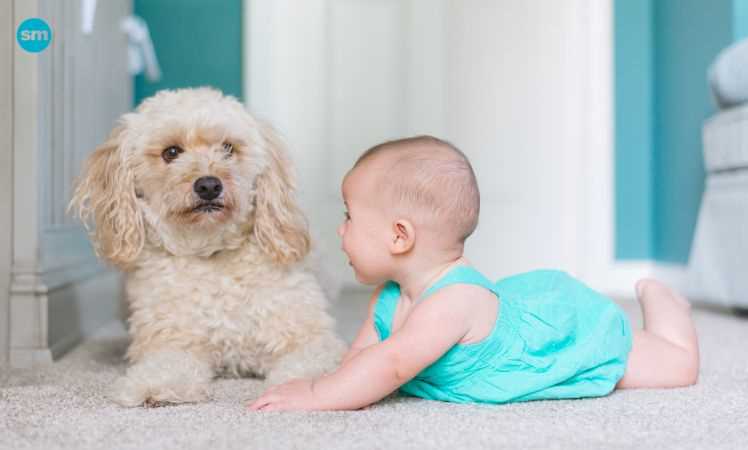Last updated on January 22, 2024 by Lori Pace
As a single mother, you have a plethora of responsibilities and decisions on your shoulders. One such decision that often comes up is whether to introduce a puppy or add a furry member to your family.
Pets, especially dogs, can provide children with companionship and teach them valuable lessons about responsibility, empathy, and caring. However, raising a puppy with children also comes with some challenges.
The joys and challenges of raising a puppy
While raising a puppy is undeniably enjoyable, it also comes with unique joys and challenges.
Especially for single moms, the process involves not only the typical hurdles of raising a puppy, but also managing the dynamics of introducing a new, lively member to the family.
Understanding these joys and challenges can give us a clearer picture of what to expect going forward and how to create an enriching environment for everyone involved.
Benefits of raising a puppy
Having a puppy at home can bring new energy and joy to your family. They can also make excellent companions and contribute significantly to a child’s development. Benefits include:
friendship
A puppy’s lively and affectionate nature can bring energy to your home. The bond between your children and their puppy can develop into a unique, enriching friendship that brings warmth, comfort, and companionship to your family.
Teaching Responsibilities
The needs of a puppy provide children with the opportunity to learn first-hand about responsibility. This includes:
- Feeding: Understand the importance of nutrition and regular meal times.
- Walk: Recognize the necessity of exercise for overall health.
- Grooming: Understand the importance of cleanliness and regular grooming.
Social skills and empathy
Puppies can help children develop basic social skills and empathy. Interacting with pets teaches children nonverbal communication, mutual respect, and understanding the needs and feelings of others. Through interactions with puppies, children learn:
- Interpret nonverbal cues: Understanding your puppy’s body language helps children develop the ability to interpret nonverbal cues, a vital social skill.
- Mutual Respect: Children learn to treat puppies with gentleness and respect, teaching them how to handle delicate situations and interact politely with others.
- Empathy: By learning to respond appropriately to your puppy’s emotions, such as pain, joy, or fear, children can learn empathy, an important skill for their emotional development.
challenge
While it can be a lot of fun, raising a puppy does come with some challenges. To ensure a positive environment for everyone, it’s important to understand and be prepared for:
time and effort
Puppies require a lot of care and attention, especially in their first few months of life. For single moms who already have multiple responsibilities to juggle, this can be a daunting task. Puppies need:
- Feed regularly: Puppies usually need multiple feedings per day, which need to be scheduled around their nap and play times.
- Training: Basic obedience training, house training and socialization are all essential to a well-behaved puppy and can require a lot of time and patience.
- Exercise: Puppies have lots of energy and need plenty of play and walks to stay healthy and happy.
Potential security issues
Especially with larger or more excitable breeds, there is a risk of accidental injury during play. Young children may be knocked down, scratched or bitten if play is too rough, so close supervision is necessary.
allergy
Children and even adults can be allergic to dogs. These reactions can range from mild irritation to severe reactions, which is an important consideration before bringing a puppy home. If you’re unsure about potential allergies, consider getting your family allergy tested.
Managing Complications: Electronic Collars
While these challenges may seem daunting, they can be effectively addressed with the right strategies and tools.
Use training tools
Training your puppy is essential to ensuring a harmonious environment in your home. E-collars can be an effective training tool. While its use may be controversial, if used correctly and humanely, it can contribute to successful training outcomes.
- Function: E-collars can be used to train puppies for a range of behaviors, such as not barking excessively, staying within boundaries, and responding to commands.
- choose: Choosing the right e-collar is important. Look for features like a range of intensity settings, the ability to sound or vibrate warnings before static stimulation, and a comfort level that’s right for your pup.
set boundaries
Setting boundaries for your puppy and your children is crucial. Teach your children how to interact appropriately with your puppy and respect its space. Likewise, train your puppy to understand its limitations in your household.
- Respect Space: Teach your children not to disturb your puppy when it is eating or sleeping. This will help avoid any aggressive reactions from your puppy.
- Gentle Interaction: Make sure your child understands the importance of gentle interaction with your puppy and avoid pulling on its ears or tail, which may irritate it.
- Supervised play: Make sure play between your child and puppy is always supervised to prevent any unintentional injury.
final considerations
As a single mother, deciding to raise a puppy with your children is a big decision. While it presents certain challenges, the rewards are incredibly fulfilling.
By understanding potential complications and adopting effective strategies to manage them, you can successfully integrate a puppy into your family’s life.
Whether using tools like the Best Dog Electronic Collars or teaching your children respect and responsibility, you can create a safe and loving environment for all family members, two-legged and four-legged.




